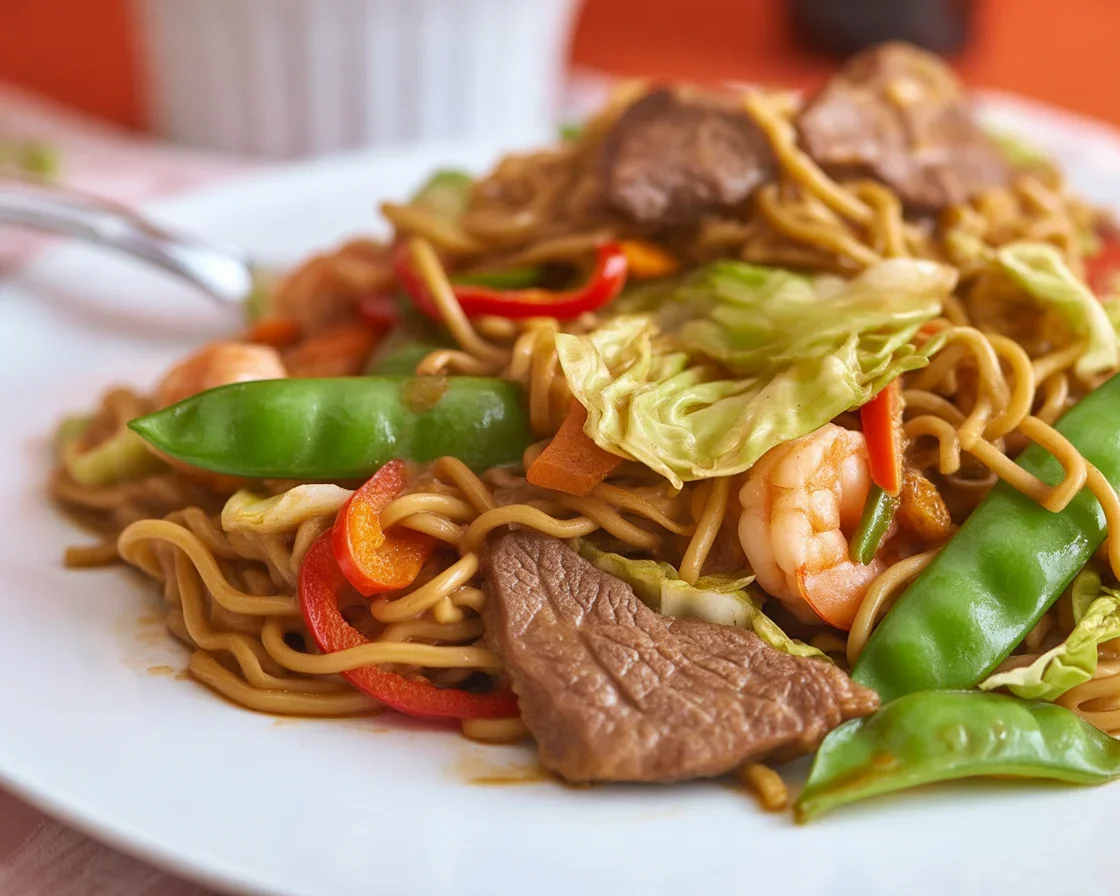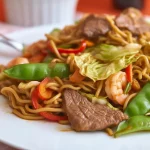Filipino pancit bato was always that dish I’d see at reunions, then totally wonder how it ended up tasting so good with, honestly, just some noodles and leftovers. Ever stood in your own kitchen, staring at a pile of random veggies, and thought, What now? Yup, same. That’s exactly where Filipino pancit bato comes to the rescue. It’s way easier than it sounds and honestly so comforting (and budget-friendly). If you enjoy experimenting, stick around and you’ll see how this humble noodle meal can outshine fancier stuff like bistek or even rival those kid-friendly Filipino recipes. Fair warning: once you make it at home, you’ll keep coming back for more slurps over pricey takeout. If you like recipes packed with soul, not just ingredients lists, you’re in the right spot. 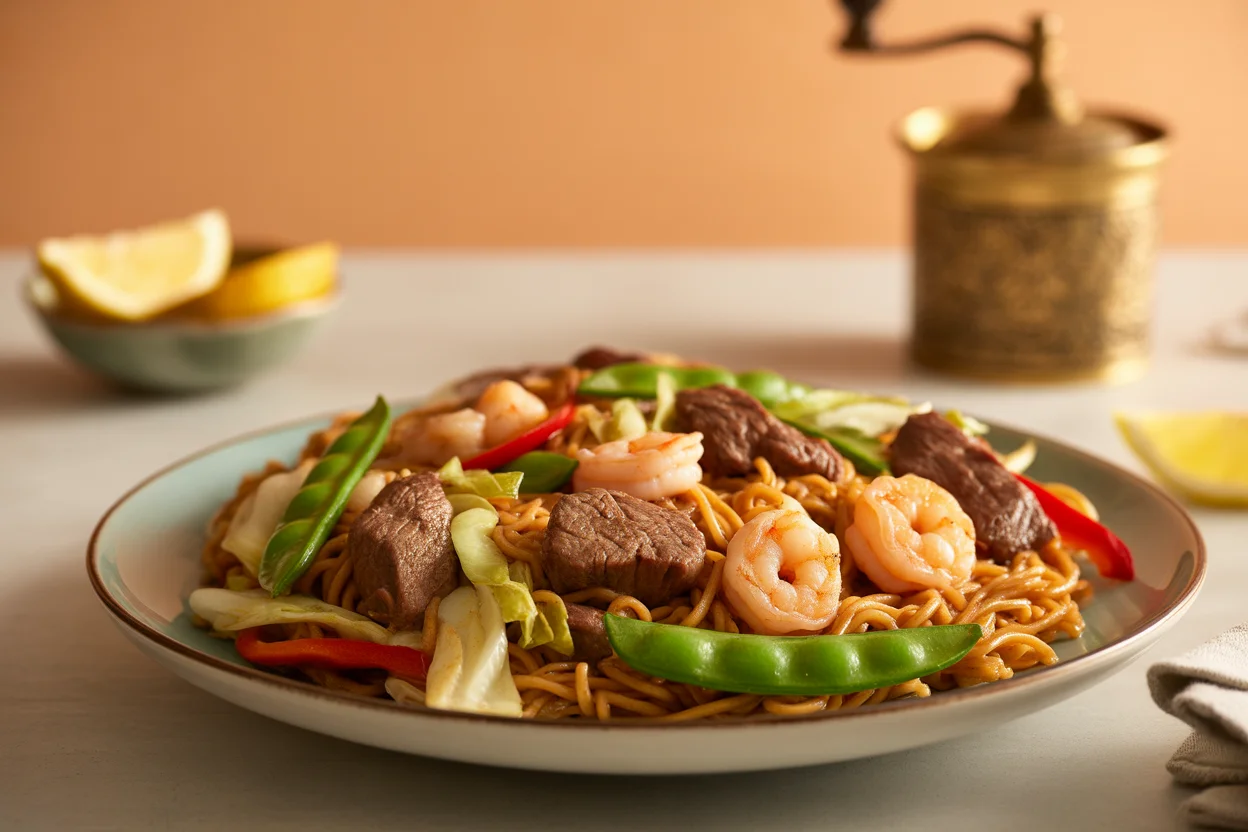
Overview of pancit bato
Let me tell you, pancit bato isn’t your regular pancit. The noodles are unique — firm and chewy — because they’re dried under the Bicol sun right in Bato, Camarines Sur. Try to picture something between canton and bihon, but with a personality. I first tasted this when a family friend shipped a pack from Bicol to Manila, tucked in her suitcase (smelled like garlic the whole bus ride, but worth it). Some folks think all Filipino noodles are more or less the same but — honest — pancit bato is a different breed.
What stands out? The noodles soak up flavor ridiculously well. Plus, they hold their shape, don’t get mushy, and are hearty enough for meal-prep lunatics or those who just “accidentally” let things sit out a little too long. If you’re all about quick mealtimes, you’ll appreciate this one. And if you’re curious about healthy Filipino recipes, it’s flexible enough to tweak for your diet.
One time, my cousin tried swapping the noodles with bihon. Ended up with a sticky mess. Trust me, get the legit pancit bato noodles if you can. 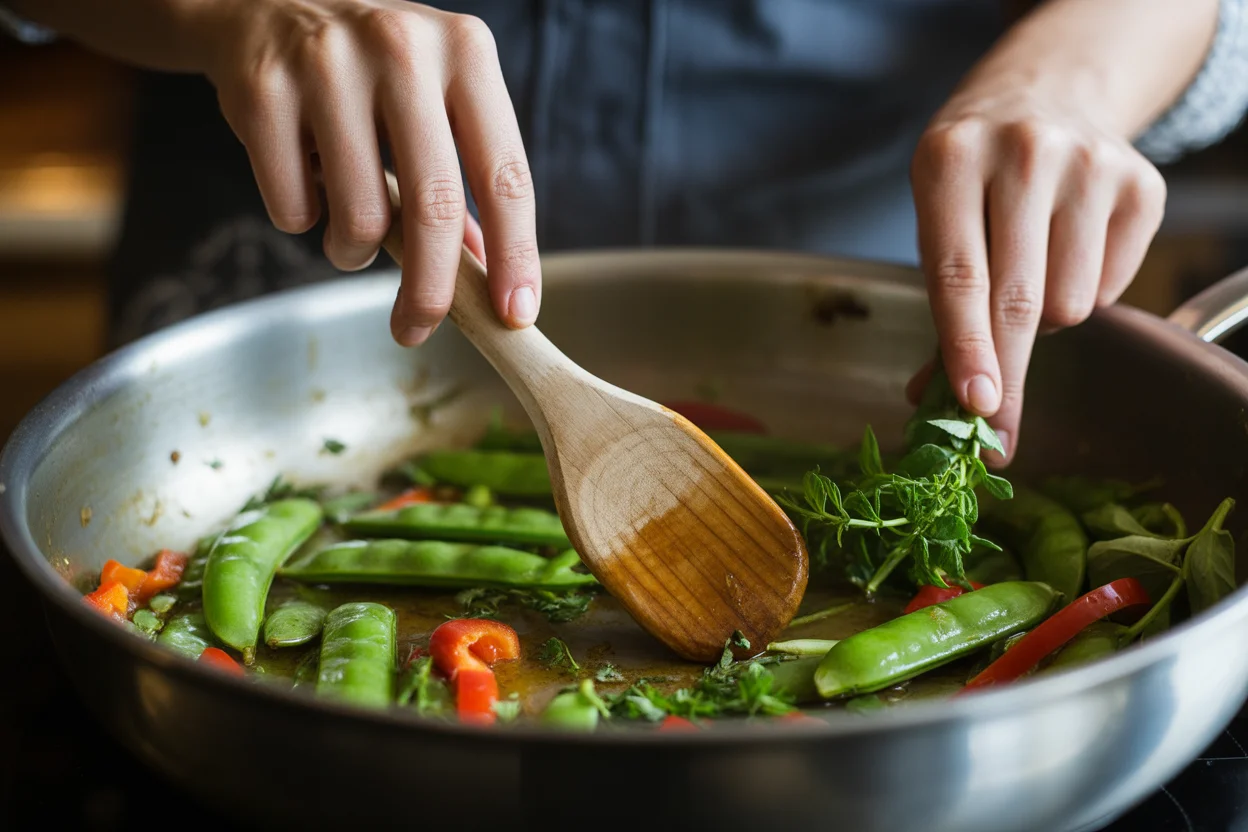
“After years of instant noodles, pancit bato was a game changer for our Sunday lunches. The chewiness surprised everyone. Kids thought it was ‘special spaghetti’ at first!” – Abby R., Makati
Preparing noodles
Alright, let’s break it down. When I first made pancit bato, I totally overcooked the noodles. They turn out perfect with a little care, though.
Here’s what I do: boil water in a big pot. Drop the dry pancit bato noodles, but not for long. About 3 to 4 minutes — or less, honestly. Just until they start to soften. Give them a little nudge with a fork so they don’t clump (I’ve learned the hard way). Once they’re pliable but not soggy, drain and rinse under cold water. Shake off any extra water — you don’t want a watery stir-fry.
This quick cook helps the noodles stay chewy. That’s the magic right there. You want the sauce to get soaked in but keep a bit of bounce. Pro tip: If you add wet noodles to the pan, they’ll turn gummy, and life is too short for gummy pancit. 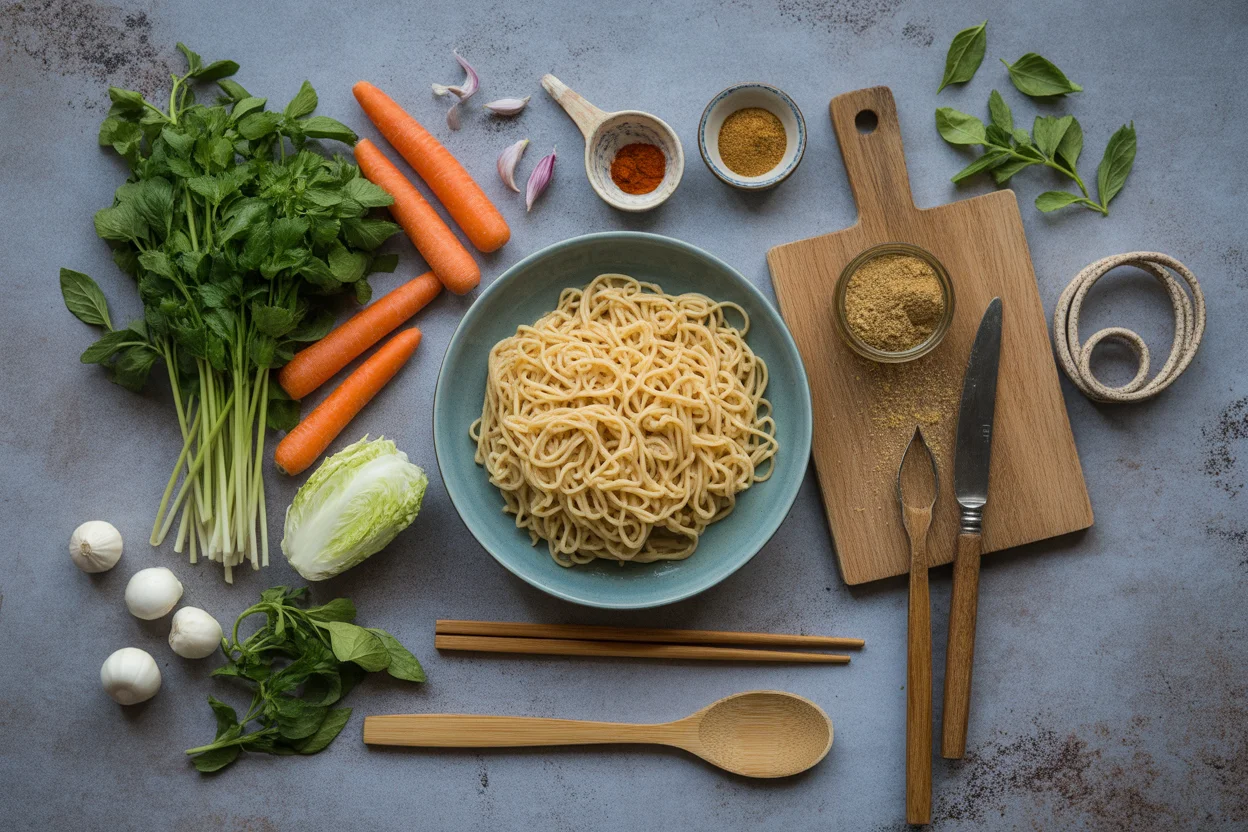
Cooking sauce
So, here’s where things get flavorful. Most people use a mix of soy sauce and a little bit of fish sauce. You want that salty depth. I use basic pantry stuff: soy sauce, a dash of fish sauce (patis), black pepper, and a bit of chicken or pork broth. Sometimes a squeeze of calamansi if you can’t resist a little zing — totally optional but fun! Some home cooks add a pinch of sugar for “balance,” but I usually skip that.
Start by sautéing chopped garlic and onions in a big pan. Breathe in, because nothing beats that smell. Toss in your broth and seasonings, stir, and let everything mix for a few minutes on medium heat. Taste as you go — soy sauce can get salty fast. Sauce should be just a bit salty, since the noodles will absorb some of that sharpness.
This isn’t fancy, but trust me, getting the sauce right makes the whole thing pop. And yes, you can always adjust seasonings later. Don’t panic if it tastes strong, the noodles mellow everything out.
Stir-frying with vegetables
So here’s the part I enjoy — throwing in whatever’s left in the veggie drawer. Classic pancit bato usually includes carrots, cabbage, maybe some green beans. That’s the template, but I’ve tossed in bok choy, snap peas, or sweet peppers without any issues.
Start with carrots and beans first, since they need a few minutes to soften. Next, toss in cabbage and leafy stuff, because they wilt fast. Quick stir, then straight in go the noodles and sauce.
Nothing too precious here: you just want the veggies tender-crisp. Not soggy. Stir everything around to let flavors blend. Your kitchen will smell like a fiesta, promise.
Funny side note — one time I tried adding broccoli. Not exactly authentic, but nobody complained. They just asked for seconds.
Adding protein options
Think of this as the choose-your-own-adventure part. Pork strips, chicken bits, shrimp, or even tofu if you’re going meat-free. Honestly, any leftovers on hand? Go for it. I usually go with chicken and a handful of shrimp, but leftover lechon kawali is next-level.
One auntie of mine swears by using liver (her secret move), but if you’re not into that, just skip it. Brown whatever protein you picked in the pan before the veggies. Then scoop it out and set it aside so it won’t dry out during the stir-fry madness. Later, add it back in when everything’s almost done.
You don’t need a crazy amount of meat here — just enough to make the meal feel hearty. And if you’re totally plant-based, just go wild on the veggies. No judgment. I’ll admit, I’ve used canned tuna in a pinch. Still delicious.
Serving hot
Now we get to my favorite part: eating. Pancit bato tastes best hot, fresh from the pan. The flavors are punchier, the noodles perfect, and people will show up in the kitchen out of nowhere (seriously, it’s like a family magnet).
Here’s how I usually serve it up:
- Pile it high on a big platter, sprinkle over some crunchy fried garlic or green onions
- Crisp chicharon bits on top? Go for it, you’re living like royalty.
- Squeeze of calamansi on the side (or lemon if calamansi’s impossible to find)
- Leftovers store well in the fridge for a day or two — if there are any, honestly.
Don’t worry if it doesn’t look like five-star restaurant plating. The messier it looks, the better it seems to taste.
Regional background
A little bit of nerdy history, before you go and eat everything. Pancit bato hails from Bato town in Camarines Sur, Bicol, where the local folks figured out sun-drying these fat noodles was genius. The recipe spread — now, even city families make it a staple for birthdays and simple get-togethers.
Bicolanos are famous for their bold flavors (they love the spicy stuff), but pancit bato is more about that homey, nostalgic feel and the signature chewy noodles. Some versions do go spicy with chilies, others keep it mild, but always hearty and filling. Funny thing, some say you’re not a true Bicolano until you can make or at least eat a giant plate of pancit bato at a fiesta — challenge accepted, right?
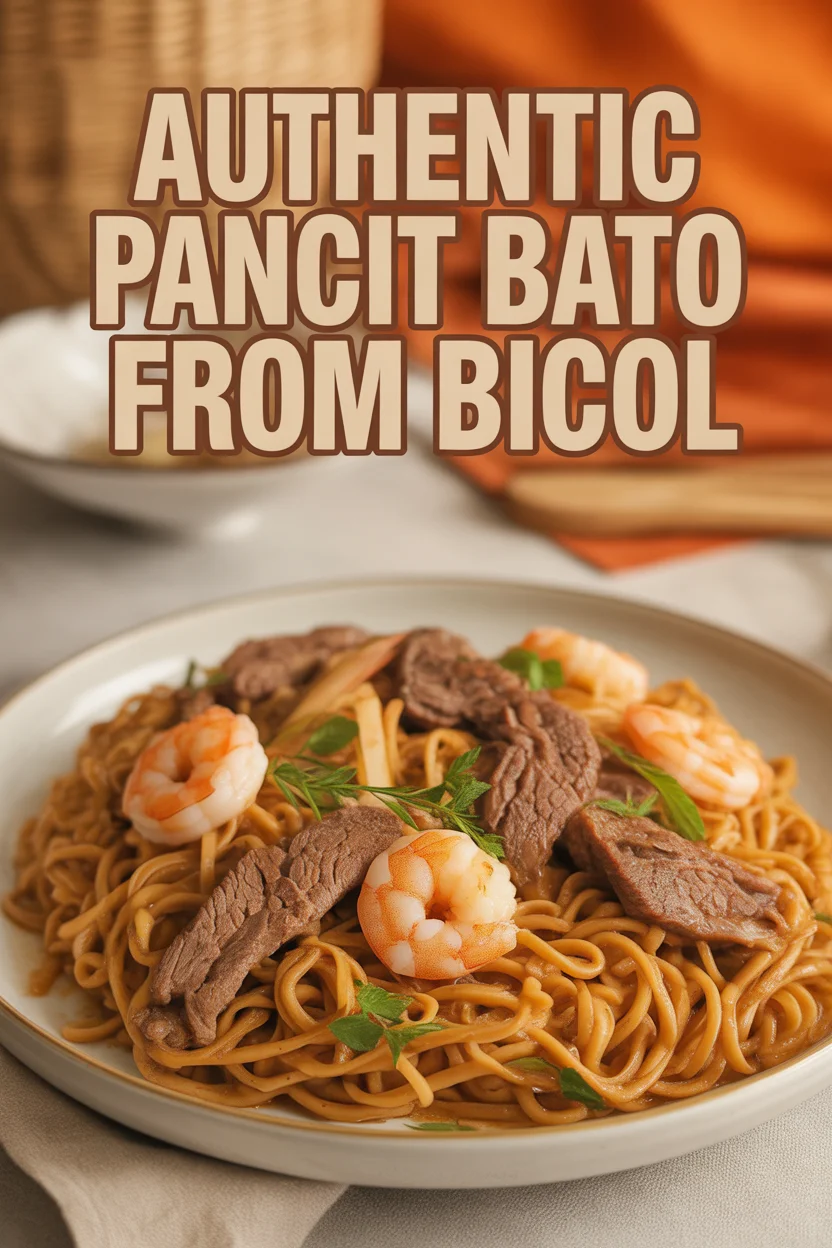
Want more noodle wisdom or curious about pancit variations? My noodle-obsessed crew loves this Pancit Bato Guisado Recipe for step-by-step help. If street food is more your vibe, check out the wild pancit creations at Filipino Street Food | Pancit BATO with Chicharon Bulaklak …. You’ll also find some fully loaded versions (complete with chicharon and liver, yowza) over on PANCIT BATO FULLY LOADED with chicharon and chicken liver ….
Ready to change up your weekday meals? Give Filipino pancit bato a go — it’s like an edible hug straight out of Bicol, and way easier than you expect!
Pancit Bato
Ingredients
Noodles
- 8 oz Pancit Bato noodles These unique noodles are firm and chewy, essential for the dish.
For the sauce
- 3 tbsp soy sauce Adjust to taste, as soy sauce can be salty.
- 1 tbsp fish sauce (patis) Optional, adds depth of flavor.
- 1 cup chicken or pork broth Use for sautéing garlic and onions.
- 1 tsp black pepper To taste.
- 1 tbsp calamansi juice Optional, for a zesty flavor.
Vegetables
- 1 cup carrots, chopped Add first as they need longer to soften.
- 1 cup green beans, chopped Add with the carrots.
- 2 cups cabbage, chopped Add towards the end as they wilt quickly.
Protein
- 1 cup chicken, diced Can substitute with other proteins like pork, shrimp, or tofu.
- 1 cup shrimp, peeled and deveined Optional, can use leftovers.
Garnish
- 1 tbsp fried garlic To sprinkle on top before serving.
- 1 tbsp chicharon, crushed Optional, for extra crunch.
- 1 each calamansi or lemon Squeeze on top before serving for added flavor.
Instructions
Preparing Noodles
- Boil water in a large pot and add the pancit bato noodles for 3 to 4 minutes until they soften slightly.
- Drain and rinse under cold water to stop the cooking process. Shake off excess water.
Cooking Sauce
- In a large pan, sauté chopped garlic and onions until fragrant.
- Add in the broth, soy sauce, fish sauce, and black pepper. Stir well and let it simmer for a few minutes.
- Taste and adjust seasoning as needed, ensuring it's slightly salty but balanced.
Stir-Frying with Vegetables
- Add chopped carrots and green beans first, cooking until slightly tender.
- Add cabbage and toss quickly to mix. Avoid overcooking.
- Add the prepared noodles and sauce, gently mixing everything together.
Adding Protein Options
- Brown the chosen protein (chicken, shrimp, etc.) in the pan before adding the vegetables. Set aside after browning.
- Add the protein back into the stir-fry just before serving.
Serving Hot
- Serve the pancit bato hot on a platter, garnished with fried garlic, chicharon, and fresh calamansi.
